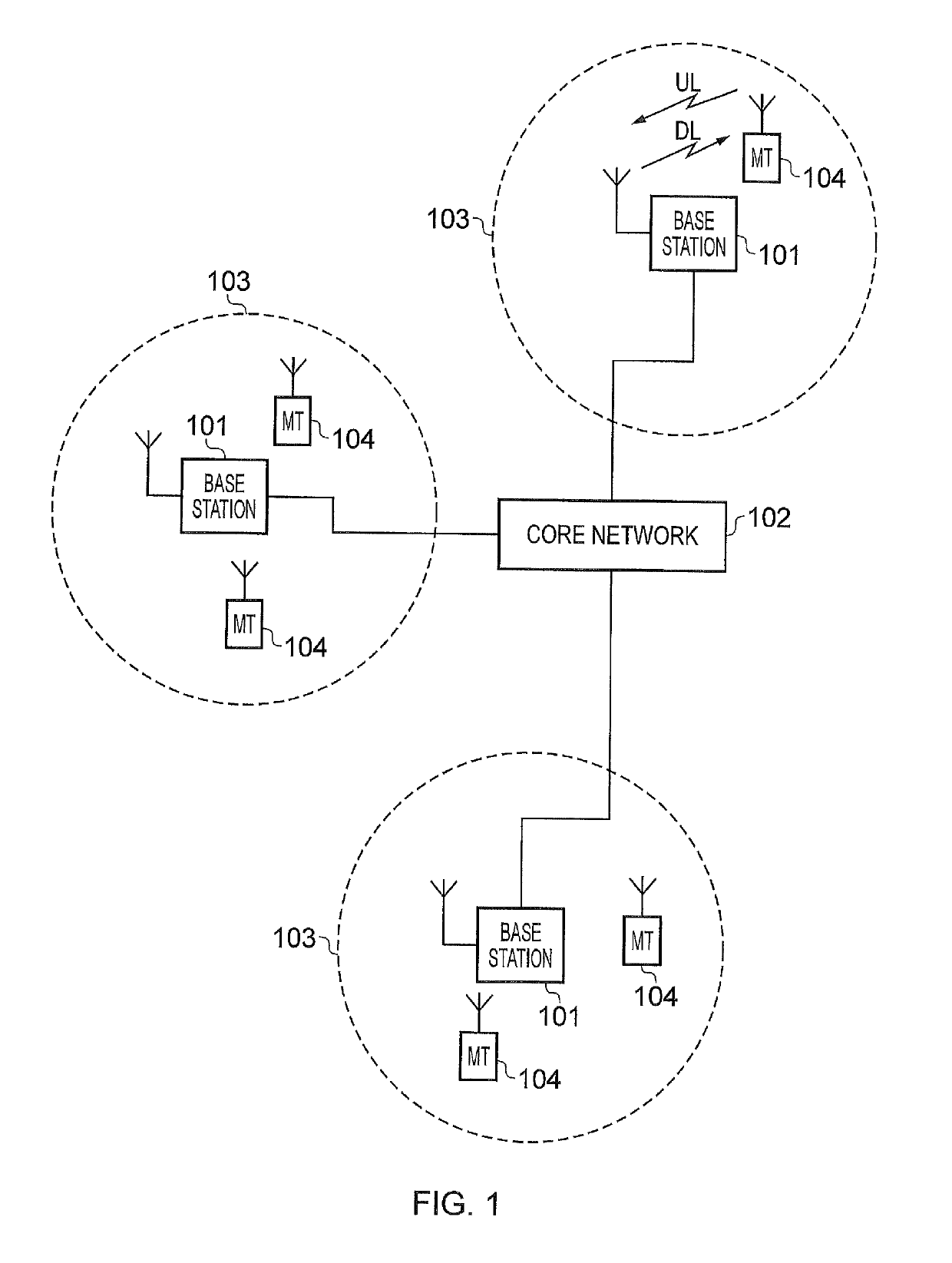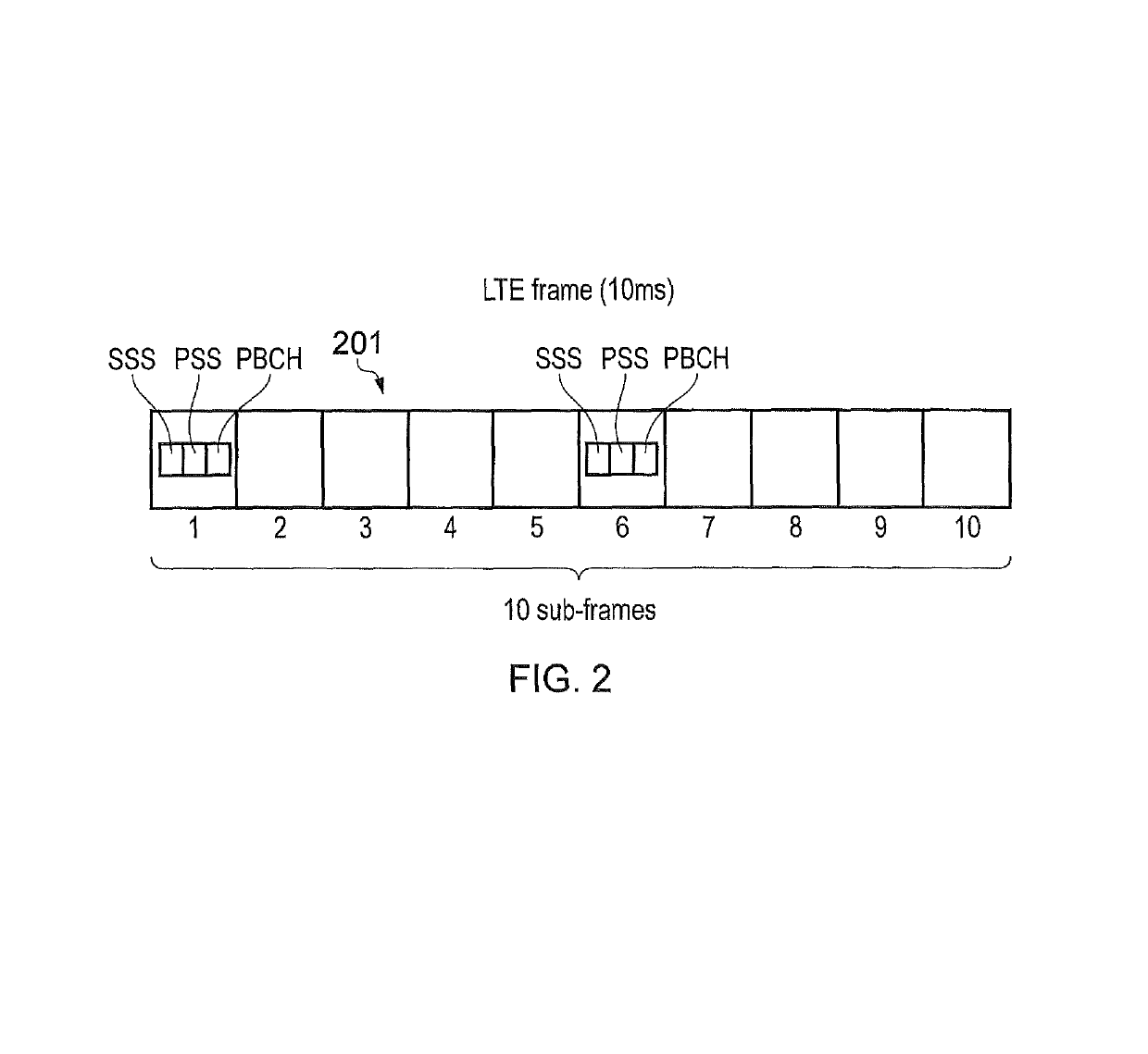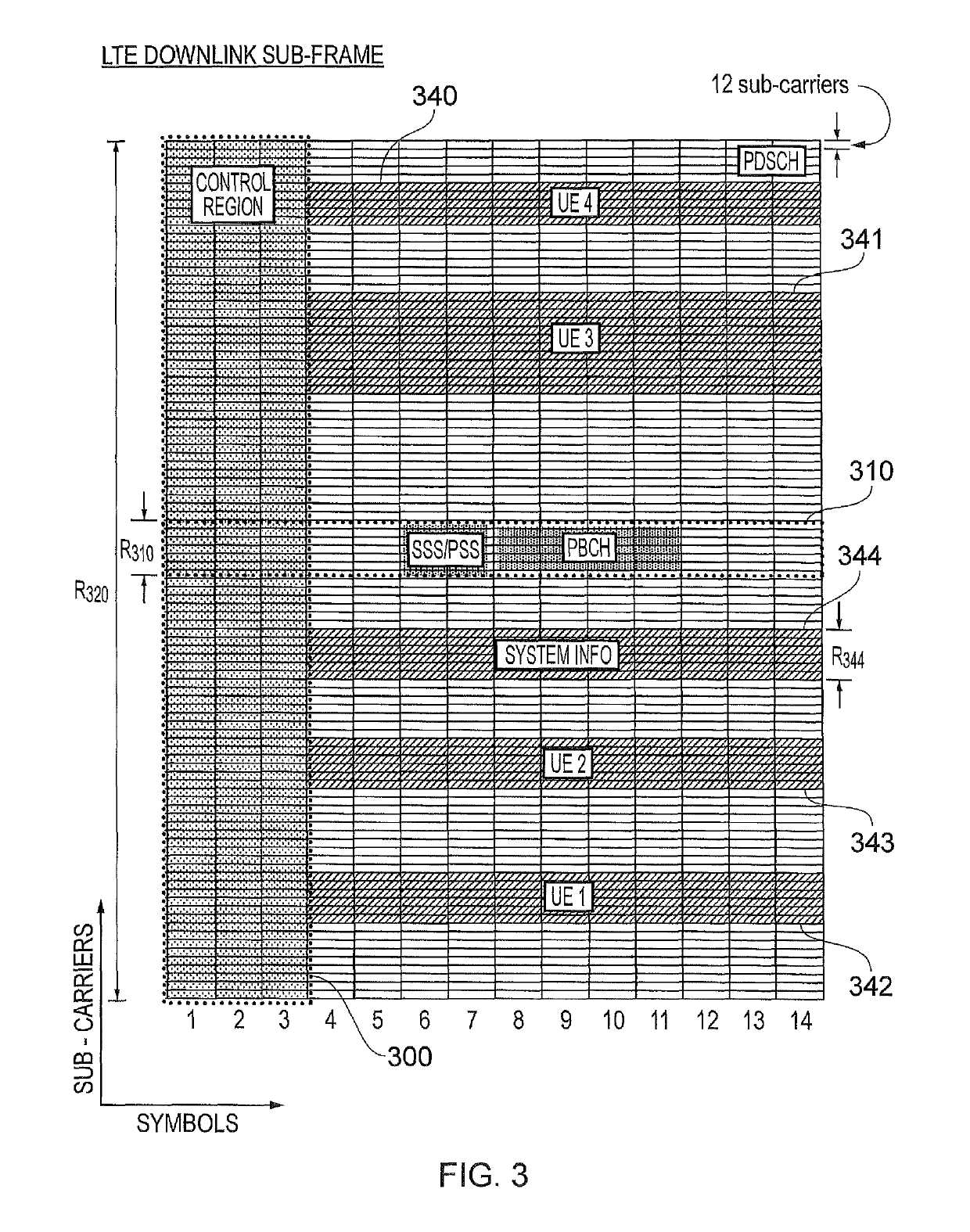Communication device for LTE communication within unused GSM channels
a communication device and channel technology, applied in the field of communication devices and communications systems for communicating data, can solve the problem of limiting the deployment of lte to contiguous frequency resources, and achieve the effect of reducing the demands placed on the communication devi
- Summary
- Abstract
- Description
- Claims
- Application Information
AI Technical Summary
Benefits of technology
Problems solved by technology
Method used
Image
Examples
Embodiment Construction
Conventional LTE Communications System
[0046]FIG. 1 provides a schematic diagram illustrating some basic functionality of a conventional mobile telecommunications network, using for example a 3GPP defined UMTS and / or Long Term Evolution (LTE) architecture.
[0047]The network includes a plurality of base stations 101 connected to a core network 102, where the base stations may also be referred to as infrastructure equipment, network elements, network entities, enhanced node Bs (eNodeB) or coordinating entities for example. Each base station provides a coverage area 103 (i.e. a cell) within which data can be communicated to and from communications devices (also referred to as user terminals, mobile terminals, MT, User equipment, UE and so forth) 104 by transmitting and receiving signals representing data across a wireless access interface which is provided or associated with the serving base station. Data is transmitted from base stations 101 to communications devices 104 within their re...
PUM
 Login to View More
Login to View More Abstract
Description
Claims
Application Information
 Login to View More
Login to View More - R&D
- Intellectual Property
- Life Sciences
- Materials
- Tech Scout
- Unparalleled Data Quality
- Higher Quality Content
- 60% Fewer Hallucinations
Browse by: Latest US Patents, China's latest patents, Technical Efficacy Thesaurus, Application Domain, Technology Topic, Popular Technical Reports.
© 2025 PatSnap. All rights reserved.Legal|Privacy policy|Modern Slavery Act Transparency Statement|Sitemap|About US| Contact US: help@patsnap.com



